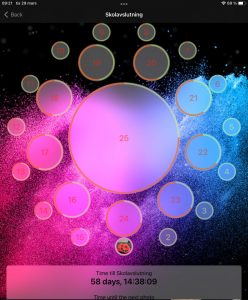Autumn day, the leaves fall in heaps. Now it can be fun to look for leaves of different shapes.
Try leaf hunting, maybe play it like bingo and see who gets a row first…
LeafHunt_Optimized (PDF, 11,2 MB)
Tips downloaded from LearningWithOutdoor
Mötespunkt för pedagoger att dela naturvetenskapliga idéer
Autumn day, the leaves fall in heaps. Now it can be fun to look for leaves of different shapes.
Try leaf hunting, maybe play it like bingo and see who gets a row first…
LeafHunt_Optimized (PDF, 11,2 MB)
Tips downloaded from LearningWithOutdoor
We are going to test the strength of paper, folded in differently shaped columns, by piling books on top. This is very similar to how columns are used to support buildings and other structures.
 Triangle, square and circle. Which paper is the strongest?
Triangle, square and circle. Which paper is the strongest?
The cylinder can support the most books because it’s walls don’t have any edges. The force of the books cannot become concentrated in a particular area. The load is distributed evenly. In other words, all parts of the cylinder are sharing the load of the books. All parts of the cylinder, therefore, contribute to it’s overall strength until, finally, it collapses.
The square and triangle deform more easily. They shift the weight of the books to their edges and corners, which deforms their walls and leads to a quick collapse. They are unable to carry weight only at their edges.
Have you noticed columns in buildings and other structures, like parking garages? What shape are the columns? Are they on the inside of the building/structure to serve their practical purpose of supporting beams or arches? Or are they exterior columns which lend support but also beauty to the structure?
Early architects in several ancient civilizations used columns in architecture including the ancient Egyptians, Persians, Greeks and Romans.
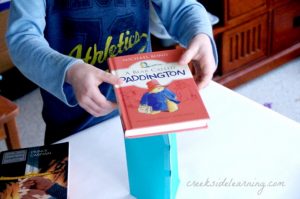
How many books can you pile on top of each shape? We did this experiment three times and got three different results, although the cylinder always bore the weight of three to four times the amount of books as the square or triangle.
© Copyright 2020 CreeksideLearning.com
Learn about air resistance while making an awesome parachute! Design one that can fall slowly to the ground before putting it to the
test, making modifications as you go. Hopefully your parachute will descend slowly to the ground, giving your weight a comfortable
landing. When you release the parachute, the weight pulls down on the strings and opens up a large surface area of material that
uses air resistance to slow it down. The larger the surface area, the more air resistance, and the slower the parachute will drop.
Cutting a small hole in the middle of the parachute will allow air to slowly pass through it rather than spilling out over one side, this
should help the parachute fall straighter.
Think About It! Do bigger parachutes work better? How would you modify the design to carry a heavier or lighter weight?
This experiment is found at www.projectexploration.org
Do like this:
I give a thanks to lekolar.fi for the idea.
Tip from www.hospedagogen.com
Children will practice presenting and arguing their case. Find out which berries, fruits and seeds are found in a local area.
Divide the children into groups of three or four.
Bonus is if the children can also figure out what is in front of them on their plate. Here it might be useful to have a learning board, or a flora with them, where the children can find out what plants they have found.
In the classroom, the children can then stick the dish on the plate and describe their dish and why it is the birds’ absolute favourite.

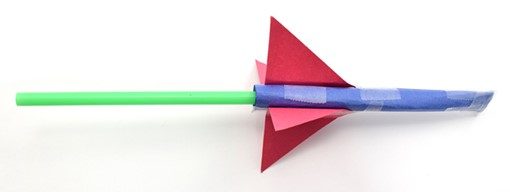
You should have seen that your finless rocket flew straight at first but quickly spiraled out of control. It might have tumbled through the air and fluttered to the ground, almost like a leaf falling from a tree. This is because the rocket did not have fins to keep it stable. If it started turning just a little bit, then it would start turning even more rapidly until it completely lost control. In contrast, your second rocket that had fins should have flown straight, and traveled much farther as a result. This is because the fins help keep the rocket stable, or pointed in the same direction. If the rocket turns a little bit, the fins help turn it back in the original direction.
Design a mythical animal through collage and illustration! This activity builds creativity as children combine items in new ways.
Children can approach the Animal Remix activity in two ways:
| .Characteristics & Abilities
(Some real, others imagined) |
Habitats
(Some real, others imagined) |
| Tough armor-like skin covering | Rocky seashore |
| Extendable toes | Polar ice cap |
| Sharp teeth | Redwood forest |
| Unbreakable shell | Storm cloud |
| Lightning-fast color change | Desert cactus flower |
| Suction cup feet | Rainforest floor |
Try these add-on activities:
Copyright © 2020 Bay Area Discovery Museum Inc. All rights reserved.
Make a code table where each letter has a code (let the children help you figure it out). Make simple things that can be drawn. Make sure they are clearly distinguishable.
Can look like (not the whole alphabet in my example):
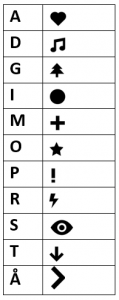
Step 2. Translate the message. So A becomes ![]() , D becomes
, D becomes ![]() etc.
etc.
Step 3. Write the message on the card and send it with a decoding table so that the message can be deciphered.
The card may look like:
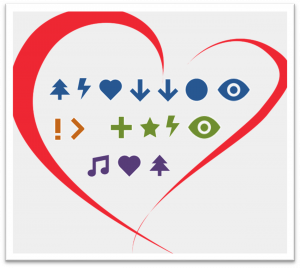
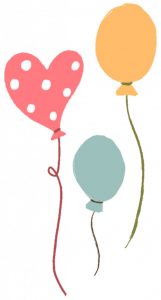
The balloon grows because the bicarbonate and the vinegar create a reaction that forms gas. The gas formed is carbon dioxide.
It can be fun to have a countdown to the summer or the spring party and see how it’s getting closer. Or to a disco, to a parent-meeting, or whatever you make up.
Gives some math practice in counting down, then on the day’s note you can have something else you want to bring up. The example below has one movement challenge per day
 From @mitt_digiloga_classroom (Instagram)
From @mitt_digiloga_classroom (Instagram)
If you want to do it digitally, there is a free app ”Pixmas Countdown” where you can make calendars on your own with a photo and text for each day. You can also choose which day you want it to open for, whether you want it Monday-Friday, or just one day a week…
